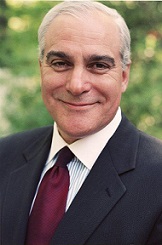For millennia stories have transmitted human experience. Storytelling simplifies complexity and helps us make sense of the world. Stories help us empathize with others. They make us feel a part of something larger than ourselves. Stories trigger emotional responses that can powerfully drive memory and motivation. Neuro-imaging shows that both hearing a story and experiencing something in real life activates the same region of the brain; the brain does not distinguish between the two.
Yet, instead of stories that touch emotion, business people tend to adopt an intellectual process to communicate. We were trained to build our cases through facts and statistics. We use PowerPoint slides to describe our challenges, report data and communicate our strategies to succeed. Although your team needs facts and data that they can trust, reason alone is not the strongest psychological driver. People are more highly motivated by emotion. A compelling story can not only provide needed information, but, when done well, it will stimulate the audience's energy and desire to act.
A story describes how and why life changes. The “Hero's Journey,” as a story form, seems particularly apt. Think about how business stories, and even your strategic plan, lend themselves to this format. The hero sets out on a quest, for example, to achieve a goal or create a solution to a problem. She faces the villain, which is an impediment that stands in the way: Difficult markets, technological change, competition, unproductive systems and regulation. She enters into battle, fights, and wins or not, and then returns home transformed.
The history of the credit union movement itself is a hero's journey. It is an exciting story of conviction, perseverance and caring. The visionary Edward Filene, the department store founder, who offered his workers – mostly women – free health care, hourly breaks and meals, was instrumental in igniting the credit union movement in Massachusetts and nationally in the early 1900s. Roy Bergengren, a poverty attorney, was brought on board by Filene to manage the Massachusetts Credit Union Association, and soon afterwards, the national organization. He traveled America establishing credit unions and promoting the state laws that supported them. These men realized that credit unions offered the power of economic self-determination to the middle class, the working poor and immigrants, culminating in the Federal Credit Union Act of 1934, a “hero's return.” The powerful story of credit unions helping society continues to this day. The individuals who built the industry over the years did so upon the values of community service, ethics and fair dealing to benefit members and their community.
A story that sparks a positive emotional response has strength. Studies show that positive emotions toward an organization or a brand exert an even greater inuence on consumer loyalty than other considerations of the brand, including trust. Personal stories count. Whether the story is yours, your employees', or your members', they all have their place. Difficulties and even conflict are facts of business life. Describing deeply human life experiences, including the struggle against adverse forces, energizes the storyteller and the audience alike and can motivate.
Facing and dealing with an obstacle rings true and even better when you don't exaggerate or minimize the situation. Painting only a positive picture not only loses the audience's interest, but also does it really ring true? How often in these cases have you felt that you were just hearing “spin” or the party line, and not anything authentic?
Moreover, good storytellers get to know their audience well. Knowledge of emotional drivers emerges from conversations with members, employees, and other stakeholders; and make sure to truly listen to their stories and experiences. Other sources, like social media and big data analysis, can also provide valuable material for analyses. A vivid insight into what people care about lets good storytellers tap into their passion.
In your next presentation, think about augmenting or even replacing your PowerPoint slides with storytelling that will engage your audience at a higher level. Audiences must fully understand your information and respect it to be moved to action. Examples and narratives that involve real people and include data and analyses are particularly compelling, especially when the CEO or the company's leaders share personal experiences, while integrating research and analysis. These stories create a visual representation in the listener's mind. They activate the experiential centers of the brain, and when the audience hears them delivered from a senior leader, they are even more effective. Appreciate the power of your credit union's stories and integrate them into your strategic communication at all levels.
 Stuart Levine is the Chairman & CEO of Stuart Levine & Associates, EduLeader LLC. He can be reached at 516-465-0800 or [email protected].
Stuart Levine is the Chairman & CEO of Stuart Levine & Associates, EduLeader LLC. He can be reached at 516-465-0800 or [email protected].
© Touchpoint Markets, All Rights Reserved. Request academic re-use from www.copyright.com. All other uses, submit a request to [email protected]. For more inforrmation visit Asset & Logo Licensing.






